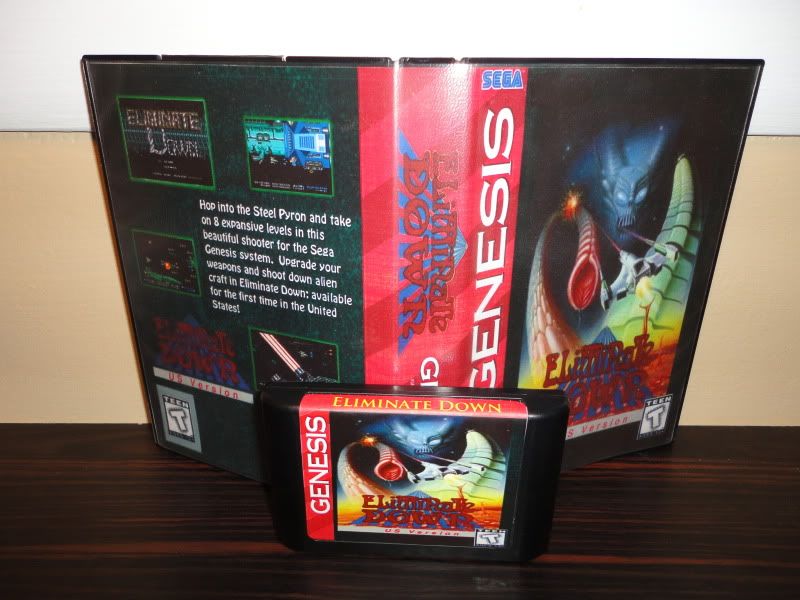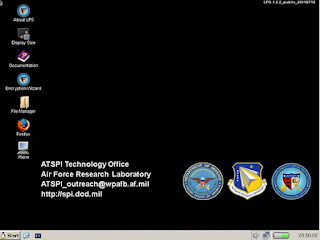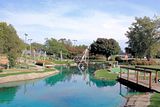In a motorcycle market where motorcycles for the street are more specialized than ever, there is one category of motorcycle that is strangely under represented compared to, say, forty years ago. That category is motorcycles best suited to the beginning rider.
When I started riding, there were many new and used street bikes in the 80-125cc and 150-250cc classes well suited to beginning riders. All of the big four Japanese manufacturers (Honda, Yamaha, Suzuki, and Kawasaki) offered such bikes new, as did several smaller Japanese and Italian makers. Triumph had their 200cc Cub, and even Harley-Davidson, through their Aermacchi subsidiary, offered small displacement motorcycles for the beginning rider.
In the 1960's and 1970's, 50cc to 125cc motorcycles were considered "small," the 150-250cc motorcycles were intermediate, the 350cc to 500cc motorcycles were midsize bikes and 600cc and larger motorcycles were "big" bikes. Today, a 250cc motorcycle is considered small and a 600cc motorcycle mid-size. Even a liter bike (1000cc) is no longer considered "big" in a world of 1250-2000cc heavyweight motorcycles. I have read articles in the motorcycle press about the Yamaha V-Star 1100's, calling them "middleweight" cruisers!
This escalation toward bigger motorcycles has benefited older and more experienced riders, who now make up the largest share of the market, but it has left the beginning rider seeking to purchase his or her first motorcycle with fewer and fewer choices. An illustration of the problem is that the lightest weight and smallest displacement motorcycle Harley-Davidson makes in 2010 is the (approximately) 550 pound, 883cc Sportster. It is purchased by many entry level riders.
When I started riding, the 883cc Sportster was the hottest motorcycle you could buy, the ultimate ride for the experienced rider. This illustrates how skewed the market has become. While there are many faster and more powerful motorcycles today, I assure you that an inexperienced rider can get into big trouble very quickly on an 883 Sportster. Recommending 600cc and larger bikes to beginners is like sending children out to play on the freeway and the results are both predictable and (often) tragic.
There are still motorcycles that are suitable for the beginning rider and I am going to take a look at some of them in this article. Cruisers and standards are usually a better choice for the beginning rider than sport bikes. Modern sport bikes do what they do extremely well (which is go around corners--or a racetrack--at high speed), but they are often not very good for much else. Cruisers and standards are more versatile, at home on city streets, country lanes and the interstate. They are suitable for commuting, weekend rides, the occasional longer trip, are generally easier to maneuver at low speed (where a tip-over is most likely) and are a little less likely to encourage overly aggressive riding.
Low maintenance shaft or belt drives are advantageous on any motorcycle. Cast aluminum wheels, tubeless tires, triple disc brakes and self-adjusting valves are other worthwhile features found on some of the motorcycles discussed below. Self-canceling turn signals and anti-lock braking systems (ABS) are important safety features that should be standard on all street bikes; unfortunately, neither is offered on most entry level motorcycles. I will try to mention the above features where applicable.
My opinion is that small to medium displacement (125-250cc) motorcycles are most appropriate for new riders. They are generally lighter and easier to maneuver, easier to balance, cheaper to repair if damaged in a spill and less likely to get the beginning rider into trouble. It might be worthwhile to pay attention to the seat height figures given for the motorcycles below, as it is reassuring for most inexperienced (and also experienced!) riders to be able to put both feet on the ground when stopped. Light weight is an advantage, as is a low center of gravity, particularly for low speed maneuvering.
Unless otherwise noted, all of the motorcycle specifications used in this article were taken from the Cycle World Buyer's Guide. More detailed specifications on most of the bikes are available on the various Motorcycles and Riding Online "Motorcycle Comparison Charts." The motorcycles specifically mentioned below are examples of suitable motorcycles in various displacement classes. They are not the only possible choices, so if you find a similar machine from a major manufacturer that is not mentioned below, it is also probably a satisfactory first motorcycle.
The bikes listed below should be reasonably available on the used market and your first motorcycle should definitely be a used bike, unless you simply have money to burn. Your first bike is how you learn to ride, it is NOT supposed to be your dream bike or your ultimate ride. Virtually no one, despite their best intensions, keeps their first motorcycle for a long time, so it might as well be purchased used to minimize the cost of later trading it in for something else.
125cc Class
A beginning pilot would not expect to learn to fly in an F-16 fighter or a wide body jetliner, so why do beginning motorcyclists expect to learn to ride on a 600cc sport bike or a heavyweight cruiser? Ideally, I would like to see beginning riders buy a standard 125cc motorcycle for their first street bike. There is a reason that so many Motorcycle Safety Foundation courses maintain their aging fleets of 125cc Hondas for their entry level classes.
These bikes are especially well suited to beginning riders of smaller than average stature, limited upper body strength, or limited confidence in their ability to master this new activity. Even very experienced riders find use for a small bike. One good friend of mine owns (at last count) seven motorcycles, including a couple of Harleys and a couple of hot sport bikes, but his daily "in town" ride remains a 30 year old Honda 90 trail bike.
A 125cc street bike can accelerate briskly off the line, is fast enough to keep up with city traffic, will cruise at 50 mph and handles like a "real" motorcycle, not a scooter or a trail bike. If it falls onto its side, most riders can right it without assistance. In military aviation terms, a 125 makes an ideal primary trainer.
Of course, few riders will be satisfied with a 125cc machine in the long run. However, for the new motorcyclist's first few thousand miles, one of these lightweight machines will make a fine commuter and primary trainer. No matter what motorcycle a new rider buys first, within a year or two he or she will want to try something different. Most riders own several motorcycles before they find the bike they like best. Burn those last two sentences into your brain. Your first motorcycle is a trainer, not a "keeper," no matter what you buy! Unfortunately, Harley-Davidson, Victory, Moto Guzzi, BMW and Triumph offer nothing in this class.
The discontinued Honda CB 125S was just about the perfect first motorcycle. The CB 125S was produced for many years. A friend of mine used to let me ride hers, which was a late 1970's model. This lightweight standard looked and handled like a real motorcycle, which it was. It was powered by a 124cc four-stroke single cylinder engine and the final drive was by chain. The wheels were laced. Stopping power was provided by a front disc and rear drum brakes. There was even a helmet lock. Top speed was about 67 mph. The last year I can find it catalogued in the Motorcycle Price Guide was 1984. That year it cost $898 brand new.
Unfortunately, only Kawasaki (with their Kawasaki Eliminator cruiser) among the Japanese "Big Four" has recently imported a 125cc street bike into the U.S. (It is no secret that the big profits are in big bikes.) The Eliminator's decent suspension allows it to handle and corner well. It is powered by a 124cc air cooled, single cylinder motor. There is a 5 speed transmission and chain final drive. The brakes consist of a disc in front and drum for the rear. The seat seight is 26.8 inches and the dry weight is 290 pounds. Top speed is about 60-65 MPH. The gas tank holds 3.4 gallons, enough to go a long way on this economical motorcycle.
250cc Class
With the demise of the 150-200cc class, the next step up in displacement is now the 250cc class (15 cubic inches). Today a 250 is considered a "small" motorcycle, but I am old enough to see them as "middleweights," which they truly are. Ideally, a 250cc class motorcycle is what the rider who has learned primary riding skills on a 125 should move up to. In military aviation terms, a 250 is your basic trainer.
A 250 is a versatile machine, fairly powerful, moderate in weight, acceptably fast. If necessary, it can cruise on the freeway at 65 mph for reasonable periods of time. A 250 is not a touring bike, although I once rode one from Eugene, Oregon to Los Angeles, California (a round trip of nearly 2,000 miles). A person can get into a lot of trouble on a 250, but for the beginning rider of average size, strength and confidence it can be an excellent trainer. A 250 street bike (not a dual sport) is just about the ideal size commuter bike for any rider, regardless of experience; it is fast enough to stay out of trouble and easy to handle and park.
The major American and European makers have not offered any street bikes in this class for a long time, but the Japanese have. In a sport bike there is the Kawasaki Ninja 250. There are good numbers of Honda Nighthawk 250 standard and CMX250C Rebel cruisers available on the used market. Suzuki is represented by the GZ250 cruiser. From Yamaha came the sharp looking Virago 250 cruiser. All of these 250's have four-stroke motors and all rely on conventional telescopic front forks and chain final drive. The average weight of these bikes is about 300 pounds. All are available in reasonable numbers and at reasonable prices on the used market.
For the aspiring sport bike rider, the Kawasaki Ninja 250 is the obvious, and often only, choice. It has a high revving, dohc, 248cc inline twin engine and a six-speed transmission. The rear suspension is provided by a mono-shock. (All of the other 250's discussed here have conventional twin rear shocks.) It also comes with cast wheels, disc brakes front and rear and a full sport fairing. The gas tank holds a whopping 4.8 gallons. The Ninja's dry weight is 304 pounds. It is the fastest and best handling of the modern 250's, with a top speed of about 100 mph. It's 29.3 inch seat height and sport bike ergonomics will be the main drawbacks for most beginning riders.
For the person who wants the versatility of a standard motorcycle, the Honda Nighthawk 250 is about the only choice. The Nighthawk is attractive and practical. Its 234cc sohc parallel-twin engine and 5-speed transmission gives it adequate performance. Its laced wheels and drum brakes front and rear should make it economical, but its list price was actually somewhat higher than the other 250's, $100 more than the Virago and $400 more than the Ninja. The gas tank holds 4.3 gallons, enough to go a long way on a 250. The Nighthawk's seat height is the same as the Ninja's and taller than the other 250's, at 29.3 inches. It weighs 287 pounds.
The best selling motorcycles today are cruisers, which explains why there are three recent cruisers in the 250cc class. The Honda Rebel was that company's entry. The same engine and transmission that powers the Nighthawk powers this mini cruiser. Strangely, the Rebel cruiser has a shorter wheelbase than the standard Nighthawk, but weighs in 19 pounds heavier (at 306). It gets a disc brake in front, which is a real improvement, and laced wheels. Fuel capacity is 2.6 gallons. The seat height is only 26.6 inches and the center of gravity is lower than the Nighthawk's.
The Suzuki GZ250's 249cc sohc single cylinder motor gave it a reported top speed of 76 mph; I would expect a little more horsepower from the Honda 234cc inline twins, and the Yamaha 249cc V-twin. However, there is no denying that singles are fun. A disc in front and a drum in back provide braking and the wheels are laced. The GZ250 cruiser weighs 301 pounds and has a generous 3.7 gallon gas tank. Seat height is 27.8 inches.
To my eyes, the Yamaha Virago 250 was the best looking of the 250 cruisers. The overall visual impression is of a true middleweight motorcycle. Its 60 degree sohc V-twin motor and five speed transmission provides adequate thrust and a little more character than the Honda and Kawasaki inline twins. A V-twin usually has a lower center of gravity than does a vertical twin. The Yamaha came with laced wheels and a disc brake in front; like the other cruisers, it has a rear drum brake. The Virago's gas tank holds 2.5 gallons and the bike weighs 301 pounds. The seat height is 27 inches.
500cc Class
With the nearly complete demise of the 350-400cc class, 500cc (30 cubic inch) bikes are now the next common step up in displacement from the 250's. To again put it in military aviation terms, a 500 is analogous to an advanced trainer. A 500cc street bike used to be a large middleweight motorcycle. Marlon Brando rode a 500cc Triumph Speed Twin in the seminal motorcycle movie The Wild Ones, which was inspired by the Hollister incident back in the 1950's. Not many outlaws today ride sweet 500cc twins!
Once the most competitive class in sporting street bikes (much as the 600cc class is today), the 500cc class has become sort of a sales backwater. Nevertheless, there is a reasonable selection of both new and used bikes available.
The typical 500 has most of the same advantages possessed by the 250's, only more so. A 500cc bike offers more of everything compared to a 250, including greater weight. The adult beginning rider of average or larger than average size, strength, and confidence will be well served by a 500cc machine as long as he or she has a reasonable amount of self-control. The average weight of the 500's discussed below is 388 pounds, 88 pounds more than our average 250.
A 500cc bike is fast enough to run with the big boys, although it will be working harder at any given speed than a 600cc or larger displacement motorcycle. This is very attractive to most prospective buyers, but bear in mind that a beginner can also get into trouble more quickly than he or she would on a 250. Until 2001, 500cc was the maximum displacement allowed in Gran Prix racing (there are also 250cc and 125cc classes). While a 500 can be among the most versatile of motorcycles for the solo street rider, it can also be a very high performance motorcycle!
A typical 500cc street bike probably has a top speed of around 100 mph and can cruise for extended periods of time above the legal speed limit on the highway. It is still light enough to be a good commuter bike in the city and relatively easy to park. Most 500's have enough acceleration to blow away all but the quickest cars in an impromptu "stoplight Grand Prix." 500's traditionally have the handling and brakes to back up their acceleration and speed, if the rider has the experience, self-control and judgment to use them properly.
New or recently manufactured 500cc class bikes are available from Kawasaki, Suzuki and Yamaha in Japan and Royal Enfield in India (formerly of the UK). The same brands are prominent on the used market, along with the discontinued Buell Blast. The major European manufacturers no longer offer entry level 500cc street bikes, which is a pity. (500cc Grand Prix race replicas are not good first bikes!)
Perhaps the standout in the 500cc class, at least from the perspective of the first time buyer, is the Buell Blast. The Blast was designed as a sport-standard specifically for the adult entry level buyer. It has an ohv 492cc single cylinder motor designed to be as maintenance free as possible. The transmission is a rugged five-speed. In fact, the whole motorcycle is designed to be as maintenance free as possible. Valves never need adjusting, there is a single 40mm CV carburetor, the choke is automatic, the final drive belt never needs adjusting, the 16" cast alloy wheels run sticky tubeless tires and so on.
Everything about this motorcycle was designed to be fun and unintimidating. Included are disc brakes front and rear with two piston calipers, optional seat heights of 25.5 inches or 27.5 inches, a dry weight of only 360 pounds and a 2.8 gallon gas tank. (Sufficient since the mileage approaches 70 miles/gallon.) The primary load bearing frame member is a rectangular steel backbone, which also carries the oil supply for the dry sump engine. Suspension is by conventional telescopic front forks and a rear mono-shock.
The Blast's reported top speed is 95 mph. Stability is good and the handling is quick and razor sharp. As delivered, the Blast is so quiet and smooth that it almost does not seem like the big single that it is. However, a Vance & Hines replacement header/muffler, coupled with a low restriction air filter and a re-jetted carb, will fix that.
The Kawasaki Vulcan 500 LTD is a typically styled middleweight cruiser. It shares the same basic 498cc dohc inline twin as the Kawasaki 500cc sport bike, but the Vulcan's motor is tuned for more midrange torque and less high RPM horsepower. The transmission has six-speeds. Fuel/air mixture gets to the engine through two 32mm carburetors. The frame is a conventional mild steel cradle. Suspension duties are handled by telescopic front forks and twin rear shocks. The wheels are laced, and the brakes consist of a disc in front and a drum in back. The Vulcan 500 has a teardrop shaped gas tank that holds 4 gallons of gas and a tank mounted speedometer. Seat height is 28.1 inches. Claimed dry weight is 439 pounds.
From Suzuki we have the Suzuki GS500E sport-standard. It is powered by a 487cc dohc inline twin fed by two 33mm carburetors. There is a six-speed transmission and chain final drive. The frame is a perimeter type and conventional telescopic forks and a rear mono-shock handle suspension duties. Disc brakes front and rear stop the three spoke cast aluminum wheels and tubeless tires. The gas tank holds 4 gallons. Seat height is a tall 31.1 inches. Claimed dry weight is 372 pounds and the wheelbase is 55.5 inches. The Suzuki GS500E is one of the best equipped bikes in the class and it is usually quite reasonably priced on the used market.
Yamaha's Virago 535 cruiser, discontinued after the 2001 model year, is more radical looking than the Kawasaki Vulcan 500. A smooth 70-degree sohc V-twin engine that displaces 535cc powers the chopper-esque Virago. This engine is fed by two 34mm carburetors. Power reaches the rear wheel through a five-speed transmission and shaft final drive, the only shaft drive in the 500cc class, a big plus. The backbone type frame uses the engine as a stressed member. The raked front forks share suspension chores with dual rear shocks. A disc brake in front and a drum brake in the rear stop the laced wheels. Self-canceling turn signals are both a convenience and a safety feature. Dual shorty slash cut mufflers enhance the chopper image. The 28.3 inch seat height allows most riders to reach the ground with both feet. The 401 pound dry weight is average for the class and the low center of gravity makes low speed maneuvers less stressful.
All of this sophistication and style once put the Virago 535 at the top of the 500cc cruiser class. It remains one of the best beginner bikes in the class and it is still available on the used market.
600cc Class and larger
The question here becomes whether these powerful machines are ever good first bikes, and if so, under what circumstances? To use my military aviation analogy for the last time, starting with one of these machines is like trying to learn to fly in a combat aircraft. The most typical accident for the beginner on a new 600cc sport bike is caused by a loss of control the very first time the bike is ridden, usually within a couple miles of the dealership from which he or she bought the bike. This is not an encouraging statistic. These are not machines for the youthful or immature rider. The lure of power and speed represented by such machines will almost certainly overcome the self-control and limited skill of such riders, often with tragic results. If you are not over thirty, a mature and responsible thirty, do yourself and your loved ones a favor and learn on a lighter, easier to control, less powerful motorcycle.
A 600-650cc machine (650cc equals 40 cubic inches) does give the heavy rider, the new street rider who has extensive experience on dirt bikes, or the person who anticipates doing a lot of two-up riding (couples, for instance), a more powerful alternative to the bikes previously discussed. Motorcycles of this size will generally be heavier and more difficult to maneuver at low speed. They can be a handful in conditions of reduced traction (like gravel or dirt roads). They will cruise at high speeds for extended periods of time and can be used for touring with appropriate accessories. Because they generally cost more either new or used than the bikes previously discussed, they may have more features and more accessories may be available. The dry weight of the bikes profiled below varies from 350 to 495 pounds, averaging 423 pounds.
Even more powerful 750cc and larger motorcycles are, in my opinion, suitable for very few beginning riders. I regard them as beyond the scope of this article. They may be suitable for adult riders returning to the sport after a long layoff, but such riders are not first time buyers and usually have a good idea of what sort of bike they want. I will mention a few 600-650cc class motorcycles with this warning: FOR MATURE ADULTS ONLY! (You know, the over 40 crowd.)
The 600cc class Honda Shadow VLX represents that company's middleweight cruiser. It is the smallest bike in this group in displacement. There is a standard model and a somewhat spiffier Deluxe model. The latter has chromed cases and cylinder heads and two-tone paint. The VLX is powered by a 583cc sohc V-twin engine, which delivers its power though a five-speed transmission and chain final drive. The wheels are laced. The front brake is a disc and the rear brake is a drum. The gas tank holds only 2.9 gallons. The height of the comfortable seat is a low 25.6 inches, excellent for those of short stature. Wheelbase is 63.2 inches. Dry weight is given as 445 pounds. The VLX is handsome and practical, but not lavishly equipped. As with most Honda models, it is well represented on the used market.
The Yamaha V-Star 650 is available in two models. There is the more aggressive looking V-Star Custom and the more retro appearing V-Star Classic. Both are well appointed and handsome bikes. These are large machines for middleweights and they share the following specifications. Power comes from an air-cooled sohc V-twin displacing 649cc. There is a smooth five-speed transmission. The wheelbase of both is 64 inches. Both are built on the same Softail-looking frame with concealed rear shocks. The fuel capacity of the attractive teardrop tank is 4.3 gallons, with the instruments mounted on top a-la H-D. The front brakes are discs and the rear brakes are drums. The wheels are laced and the back tire is wide. Features of both include chrome engine/transmission cases and cylinder heads, shaft final drive and self-canceling turn signals. However, there are significant differences between the two.
The Classic, particularly, looks like a heavyweight motorcycle. The Classic's chrome headlight is larger, the seat is thicker and the fenders are longer and wider than the Custom's. The front forks are fully shrouded by chrome covers and the laced front wheel is fatter and smaller in diameter. Seat height is 28 inches. Dry weight of the Classic is a portly 495 pounds, very heavy for a 650 and especially a 650 ridden by an inexperienced rider.
The Custom is, to my eyes, the most attractive of the middleweight cruisers. It looks a lot like a chromed-out Harley Softail Standard. The dry weight of the Custom is 460 pounds, so it is also a heavy 650. It features a slim "cycle" style front fender and a bobbed rear fender. The laced front wheel is larger in diameter, narrower and held between conventional (un-shrouded) forks. The seat is thinner and lower; seat height is only 25.6 inches. The principle drawback to these excellent V-Stars from the beginner's standpoint is their considerable weight. Both models sold well and are available at reasonable prices on the used market.
The discontinued Suzuki Savage 650 is an unusual midsize cruiser in that it is powered by an air-cooled, sohc, 652cc single-cylinder engine, rather than a twin. This big thumper is very light in weight, at only 350 pounds dry. The wheelbase is 58.3 inches. This is a true 650 at a 500's size, weight and price. The seat height is a reasonable 27.6 inches. The belt final drive should be virtually maintenance free. Other specifications are more mundane. The transmission has five speeds, the slender gas tank holds only 2.8 gallons, suspension is by telescopic forks in front and conventional dual shocks in back, the wheels are laced and the brakes consist of a disc in front and a drum in the back.
The Savage comes with a low sissy bar and passenger backrest, buckhorn handlebars and a bobbed rear fender. These are features that many riders purchase as accessories for other bikes. The Savage 650 is clearly one of the best buys on the used market.
The Kawasaki W650 is a different kind of retro bike, a standard easy to mistake for a late 1960's Triumph Bonneville. Kawasaki claimed that the W650 was inspired by their own 1960's vintage W1 twin (itself a knockoff of a pre-unit construction BSA 650), but anyone who has seen a W1 knows the W650 looks nothing like that and very much like the vastly more popular Bonneville. The tank, tank badges, rubber knee pads, rubber fork gaiters, cases, exhaust system, seat, fenders, headlight and paint job all reek of Triumph influence. This is not bad thing, as the 1968-1970 Triumph Bonnevilles are widely regarded as some of the most beautiful motorcycles ever built.
Whatever its heritage, the W650 is a versatile all-around motorcycle and one of my personal favorites. It is not a typical first bike. It is more likely to be purchased by a canny old pro than an inexperienced beginner. It is the kind of bike discriminating riders settle down with after owning several previous machines.
The W650 offers classic styling and modern reliability, without oil leaks. An air-cooled vertical twin with a 360-degree crankshaft powers it, again like a classic Triumph. However, this Kawasaki twin has a sohc and displaces 676cc. The slick shifting transmission has five speeds and final drive is by chain. There is a kick starter, as well as electric starting. The gas tank holds 4 gallons. A W650 weighs 430 pounds, quite a bit more than a 650 Bonneville's 386 pounds. That includes the weight of a front disc brake, although the rear still has to make do with a drum brake. The W650's seat height is 31.5 inches, but the bike is narrow, which helps the rider's feet reach the ground.
It is not a particularly cheap 650, as it is a highly desirable bike on the used market. However, it is an easy to ride, good handling, well equipped motorcycle and one of the top choices for a rider returning to motorcycling after a long lay-off.

























